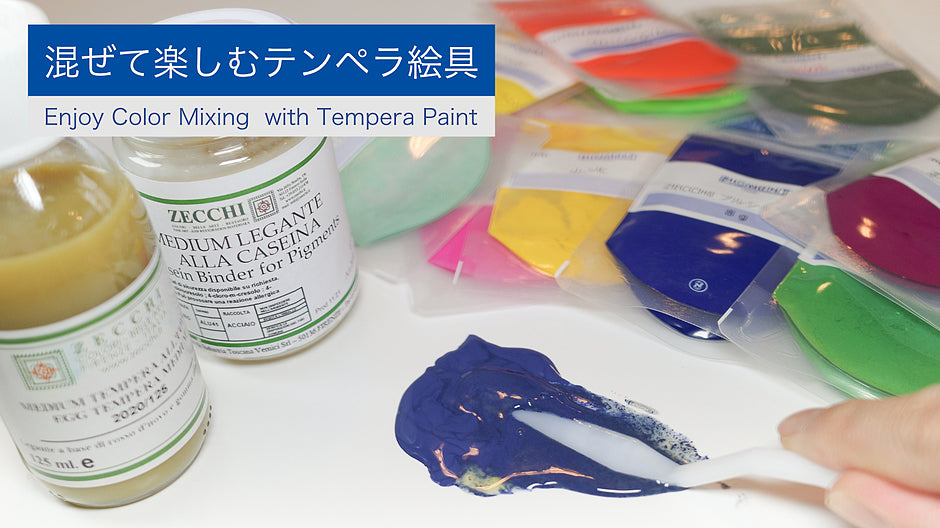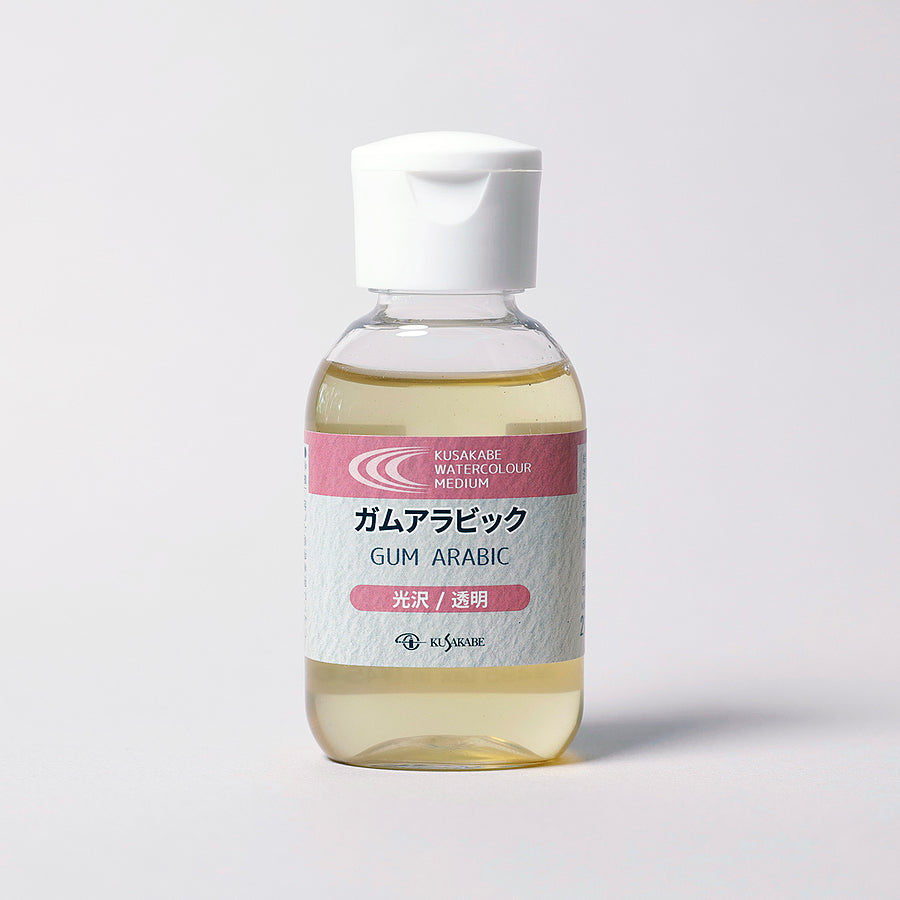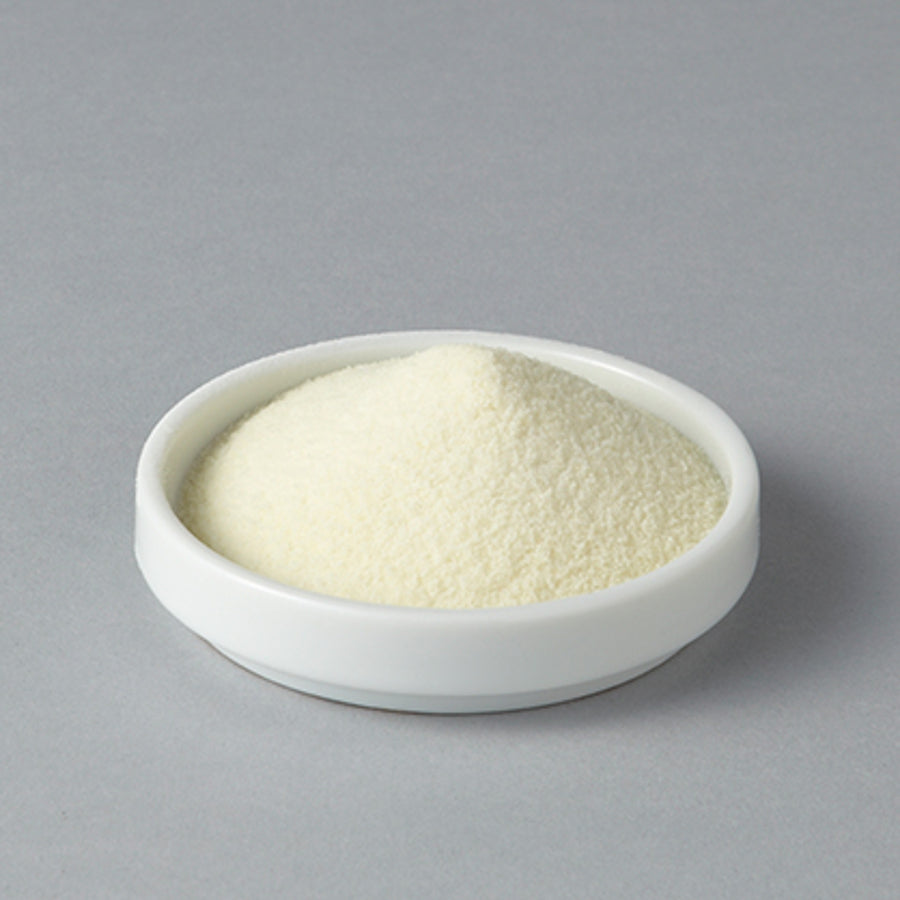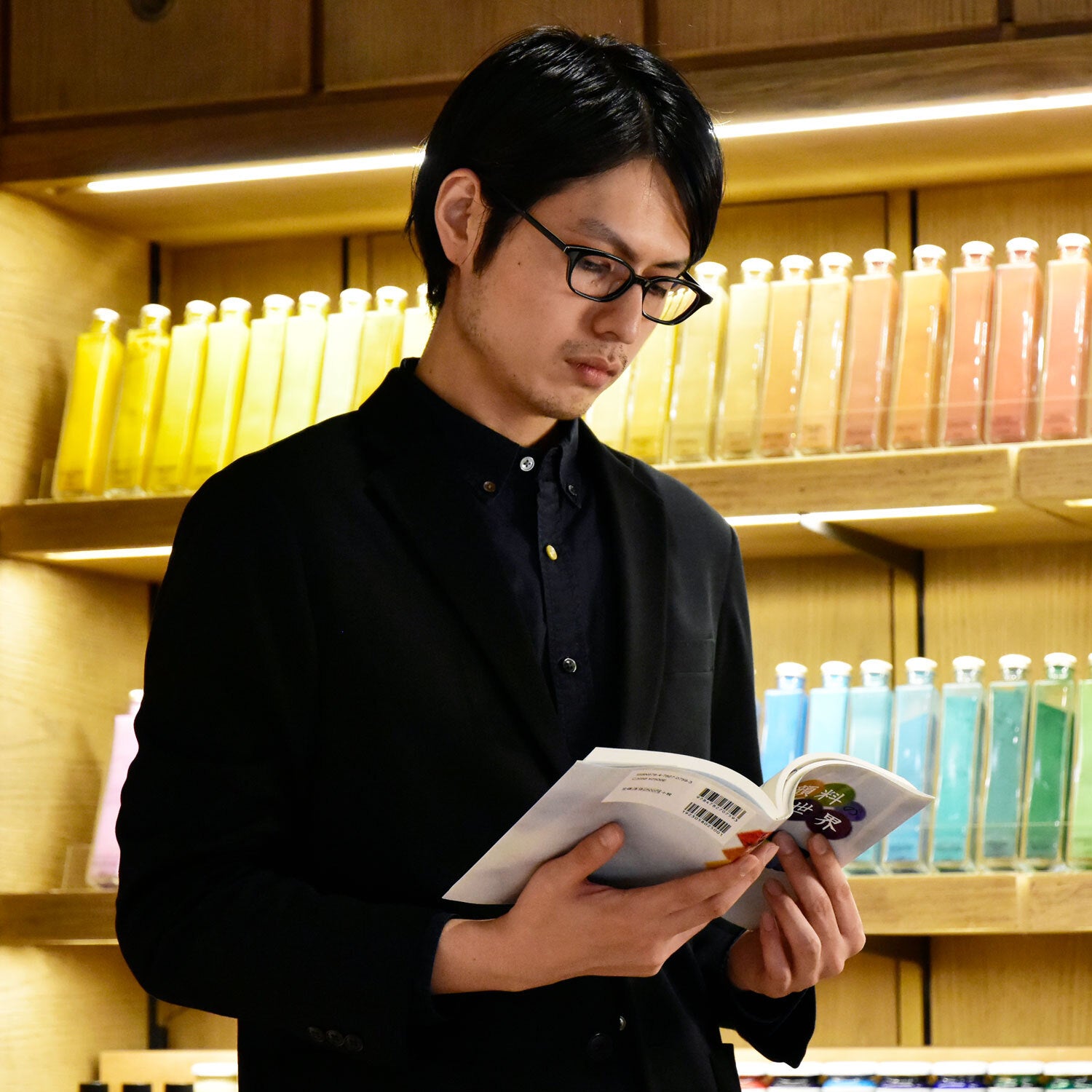There are many types of water-soluble paint mediums such as gum arabic for watercolor, Nikawa (animal glue derived from animal skin and bones) for Japanese painting, and acrylic emulsion for acrylic paint.
It is quite simple to make paint by just mixing pigments with mediums, especially gum arabic and acrylic emulsion. Therefore, these mediums are often used in the paint samples that you can find in our store or the web articles.
No doubt that being easy to use must be one of the main reasons for these painting mediums to be so well-loved throughout history.
Since tube paints are easily obtainable today, it may be not easy to create opportunities to experience other binders or mediums which are not distributed as products.
But of course, it is hard for people to come up with an idea and try a new medium because you couldn’t just look at a recipe or several material books and make it.
If you would like to try a more simple method at first, I recommend these two tempera mediums.
Egg tempera and casein may sound foreign to those who haven’t studied art before.
Tempera paint came from the Latin word “temperare,” which means to mix.
The article would become too long if I try to go deep into these materials and art history, so I will leave the details for another time. Long story short, these two mediums were mainly used in European countries before the rise of oil paints.
Both mediums are water-soluble but can be applied over oil-based paints.
Therefore, it is recommended to use them not only on their own but also in a “mixed method” such as hatching with a fine brush over a thin layer of oil paint as the texture is very different from the synthetic resins which are commonly used in painting mediums.
Although it may seem like a classical painting technique, it is easy to use because what we need to do is just mix pigments and binders.
And since these are water-soluble, it is easier to make paints by mixing them with water-based pigment pastes.
As the name suggests, egg tempera is a painting technique that uses chicken eggs as its binder. Since egg yolks, egg whites, and whole eggs can all be used as glue, various recipes have existed depending on the period and artist which makes it a highly customizable paint.
Moreover, compared to oil paint which produces thick, fleshy colors, egg tempera paints have vivid and light colors.

【Art Materials Used】
Colorants: Easily Dispersible Pigments Phthalocyanine Blue, Pigment Paste Titanium White
Medium: Egg Tempera Medium
Substrate: Canvas on Chipboard
This medium has a decent sheen and its color and glossiness are somewhere between those of oil and acrylic paints.
However, because the medium itself has a color like a cooked onion when it is mixed with white pigment, the medium might reduce the brightness of the white paint.
Casein is a type of medium extracted from cow's milk.
The raw material is in powder form as shown here and after the process of swelling and the addition of ammonium carbonate, the medium is ready to use. The formula is described in the product link below, but as you can see from it, the process sounds a bit challenging.
Like egg tempera medium, the way to use this casein medium is to simply mix it with pigments or pigment pastes, so it is not too complicated to prepare for painting.
Although it can produce a beautiful matte finish, its strong adhesion may cause the painting to crack if applied to a flexible substrate such as a canvas stretched on wooden stretcher bars. Therefore, it is always better to use rigid support such as a wooden board.

【Art Materials Used】
Colorants: Easily Dispersible Pigments Phthalocyanine Blue, Pigment Paste Titanium White
Medium: Casein Medium
Substrate: Canvas on Chipboard
Once the tempera medium is completely dry, it looks slightly drier than the egg tempera medium.
In comparison to some other familiar painting materials, if egg tempera medium has a glossy appearance similar to acrylic paints, casein has a matte quality similar to acrylic gouache.
However, it is not dull or opaque like gouache and the casein medium maximizes the transparency and color like phthalocyanine blue has.
Since the dry time is very fast, you can adjust it by adding oil-based mediums, and flexibility can also be added to the paint film.
As an experiment, I made a simple emulsion paint by mixing egg tempera and casein.
From right to left: egg tempera medium, milk casein, and a mixture of egg tempera medium and milk casein medium are added as mediums to the color which is made by mixing Quinophthalone yellow and titanium white pigments.
As shown in the paint samples below, the egg tempera medium produces the color closest to its wet color, followed by egg tempera and casein mediums, and the casein appeared the most matte.
I had no idea that the same color material could differ this much among the same water-based tempera paint family. I was surprised when I made these samples.

【Art Materials Used】
Colorants: Easily Dispersible Pigments Quinophthalone Yellow, Pigment Paste Titanium White
Medium: Egg Tempera Medium, Casein Medium
Substrate: Canvas on Chipboard
These long-established, traditional painting mediums are not only used in super photorealistic paintings. For example, the abstract expressionist master Mark Rothko used a wide variety of mediums in his "Seagram Murals" series, including oil, animal glue, whole eggs, natural resins, and synthetic resins.
Experimenting with less familiar paints could be challenging but it could also be one way to expand the possibilities for new expression in our paintings.
Translated by Atsumi Okano and Nelson Hor Ee Herng
PIGMENT TOKYO Art Materials Experts














